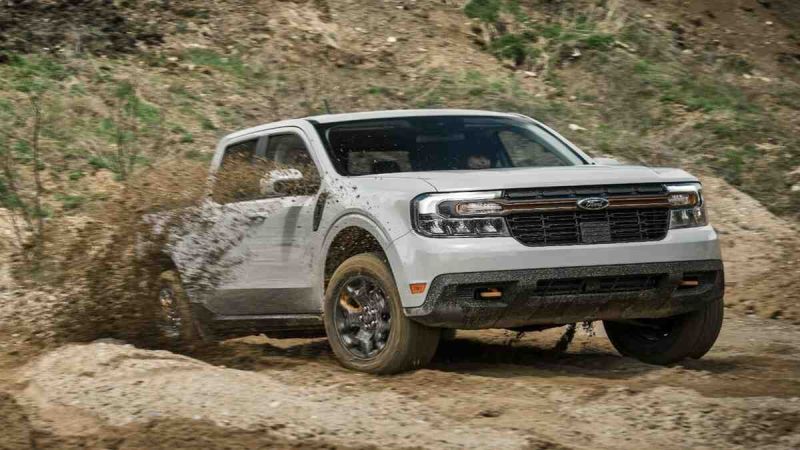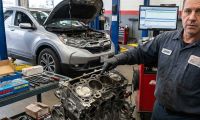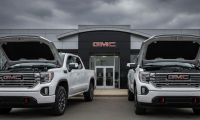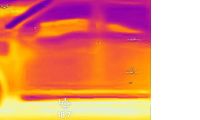A couple of years ago, It looked as if the auto industry's future was pretty settled. The future, at that time, seemed to be summed up in two letters: EV or electric vehicles. Major makers like Volkswagen, General Motors, Ford, Nissan, Kia, and Hyundai were all largely committing to EVs, and it seemed as if the handwriting was on the wall for the internal combustion engine (ICE).
The ICE Engine Seemed Headed To Museums
At that time, it seemed that the ICE engine was heading to become a museum piece as more and more makers sent their ICE vehicles to museum walls.
Here Is A List Of CR's Least-Expensive Cars
It wasn’t an unreasonable expectation either, as major retail organizations like Hertz committed to buying thousands of EVs to replace their ICE vehicles.
The numbers also seem to be trending that way, too. Indeed, this year more than 1 million EVs will have been sold by the time the final tallies are in (perhaps 2 million).
Those should have been happy numbers for the industry as they seemed to indicate the public was accepting EVs in a major way. But perhaps the buyers were early adopters who were trying things out and who could move back toward ICE vehicles when they had satisfied themselves. Or, perhaps they would remain solid EV buyers.
EVs Presented Potential Buyers With Issues
Here Is A Reasonably Price Electric Prius
But the reality is that EVs were just too expensive for the average car buyer, and potential customers still had worries about EVs. What were the worries? The usual, which included:
- Range anxiety – would an EV have enough charge to get through to wherever the customer wanted
- Price – though prices were cut by major makers like Ford and Tesla, they were still too high for the average buyer
- Affordability– the average buyer can’t afford the costs associated with EVs – yes, prices are coming down but not fast enough – one of the caveats a few years ago was that EVs would drop rapidly in price to so that average buyers could afford them – it hasn’t happened yet
- Performance – how would an EV perform in weather that was outside the norms where batteries are happy – generally 30 to 80 degrees Fahrenheit
This picture left the auto industry with a huge quandary as the models piled up on dealer lots. Where were the buyers? EVs were still selling but not in the numbers that automakers had expected now. EV sales began to soften last year, and the trend has continued, though they are still moving.
Statistics Show EV Sales Have Dropped
Indeed, the key number for the industry – days-supply – has climbed to more than 65 which is not something that dealers relish. It means that vehicles just aren’t moving in the numbers they need.
There are some “EVs” that are moving quite well, hybrids. Hybrids are the type of vehicles that buyers can like. They combine the best of both worlds, ICE and EV. Indeed, at many dealerships, if you can find a hybrid like the Ford Maverick (doubtful) or the F-150 Hybrid, you will be lucky to get any sort of discounting. True EVs are moving, but they are moving like cold molasses on a colder morning. In other words, they aren’t moving quickly enough for most dealers, and they are knocking prices down as far as they can to move them off their lots.
Industry Has Its First Million-Plus Sales Year
Maverick Named One Of Most Satisfying Vehicles
Yes, the industry had its first 1 million-plus EV sales surge this year. Price cuts on many models will likely turn things around a bit for EVs, but it leaves the industry facing a hard question.
Is the public ready for EVs? It is a tough question to answer as Hertz has decided to dump the 20,000 or so EVs that it purchased lock, stock, and chargers. The retail company is committing to ICE vehicles again. It is the vehicle of choice for their renters. And, as noted, dealers are cutting prices as far as they can to move EVs off their lots. Indeed, there are some reports of prices being cut to the point where EVs can be considered loss leaders.
It's a shame, too, because you have some excellent vehicles from Hyundai, Kia, Nissan, and Lexus. Ford has the Mustang Mach-E, which is proven and has had price cuts recently after price hikes. Even Tesla, which had kept its margins high, has had to cut its pricing and introduced more affordable models.
Mustang Mach-E Remains Strong In Used Market
But the public isn’t ready to jump on the EV bandwagon yet. Perhaps the many new models previewed at the recent Consumer Electronics Show will be the answer. This is a question whose answer won’t be known for some time.
Auto Industry Has Met Government Mandates
The bottom line is that the industry has done what the government asked and has turned itself around and away from the ICE vehicle. It has left dealers with piles of unwanted EVs just waiting for buyers that may or may not arrive.
The public is buying hybrids. Indeed, they are selling well because they offer the best of both worlds, as noted. For example, from the day Ford introduced the Maverick compact pickup, which offers a hybrid powertrain in one model. You cannot get one as they are that popular. Perhaps this is the plateau on which the industry should have landed and remained for a few years rather than turning so strongly to EVs. It makes sense as sales of hybrids have gone through the roof.
For the industry, it is a tough picture as they are left with a days-supply number that is way over what they need to keep going.
Here’s a suggestion that is solid, and it is simply this: instead of taking away the subsidy for EVs as they have been doing lately, perhaps they should increase the subsidy from $7,500 to $15,000 or more. Yes, the Treasury would take a hit, but it would also help the industry find the price point for selling EVs. Indeed, it might even help the industry find out if EVs were the way to go.
Perhaps The Industry Should Commit To Hybrids
Since hybrids are selling, perhaps that is the way to go. Who knows? With BYD set to jump into the market from China now, who knows what will shake out?
The bottom line here is simple: if the industry wants to move EVs, they have to prove to customers that they can do everything ICE vehicles can do regarding range and continued sustainability. For that, the government will have to come in and jack up the subsidies to the point where dealers can still make money and move the product that is gathering road dust in their lots.
Here are some Ideas To Keep Your EV Charged
Indeed, with this week’s super-cold snap chilling off cities like Chicago, EVs don’t seem attractive to owners whose vehicles aren’t taking any charge or, if they are charging, they are taking forever to get to 20 percent. Then, the owners must charge them quickly again to keep on rolling. It is a function of the physics and chemistry of batteries. As the temperatures dip below 32, EVs lose power. By the time the temperatures hit 0, EVs have lost about 50 percent or more of their charge and won’t charge quickly if they charge at all. There are reports from Chicago charging yards that many vehicles aren’t functional at all. This isn’t a good picture for the EV world.
It’s not a pretty picture for the EV world, leaving many people wondering if the commitment to the EV is worth it.
Ford Motor Photo
Marc Stern has been an automotive writer since 1971. His automotive articles have appeared in venues including Popular Mechanics, Mechanix Illustrated, AutoWeek, SuperStock, Trailer Life, Old Cars Weekly, Special Interest Autos, and others. You can follow Marc on Twitter or Facebook.












Comments
Actually, many people don't…
Permalink
Actually, many people don't know that lithium batteries don't like the cold. It is possible to somewhat optimize the battery chemistry to target a range of operating temperatures, but never simultaneously both scalding hot temperatures like pavement temperatures in California AND freezing temperatures like Canada. That makes EVs less suitable for places where both extremes of temperature exist, like mid latitudes, where coincidentally, most of the middle class purchasing power reside.
Forgot to mention - "range…
Permalink
Forgot to mention - "range anxiety" is just a blatant use of psychological nudging - the problem is the consumer's, not the manufacturer's.
In reality, there would be no "range anxiety" if: (1) we had charging stations as frequent as gas stations everywhere; and (2) if charging times was on the order of a few minutes like ICEVs. This makes it clear that it is not "range anxiety", it is "technological and infrastructure deficiency".